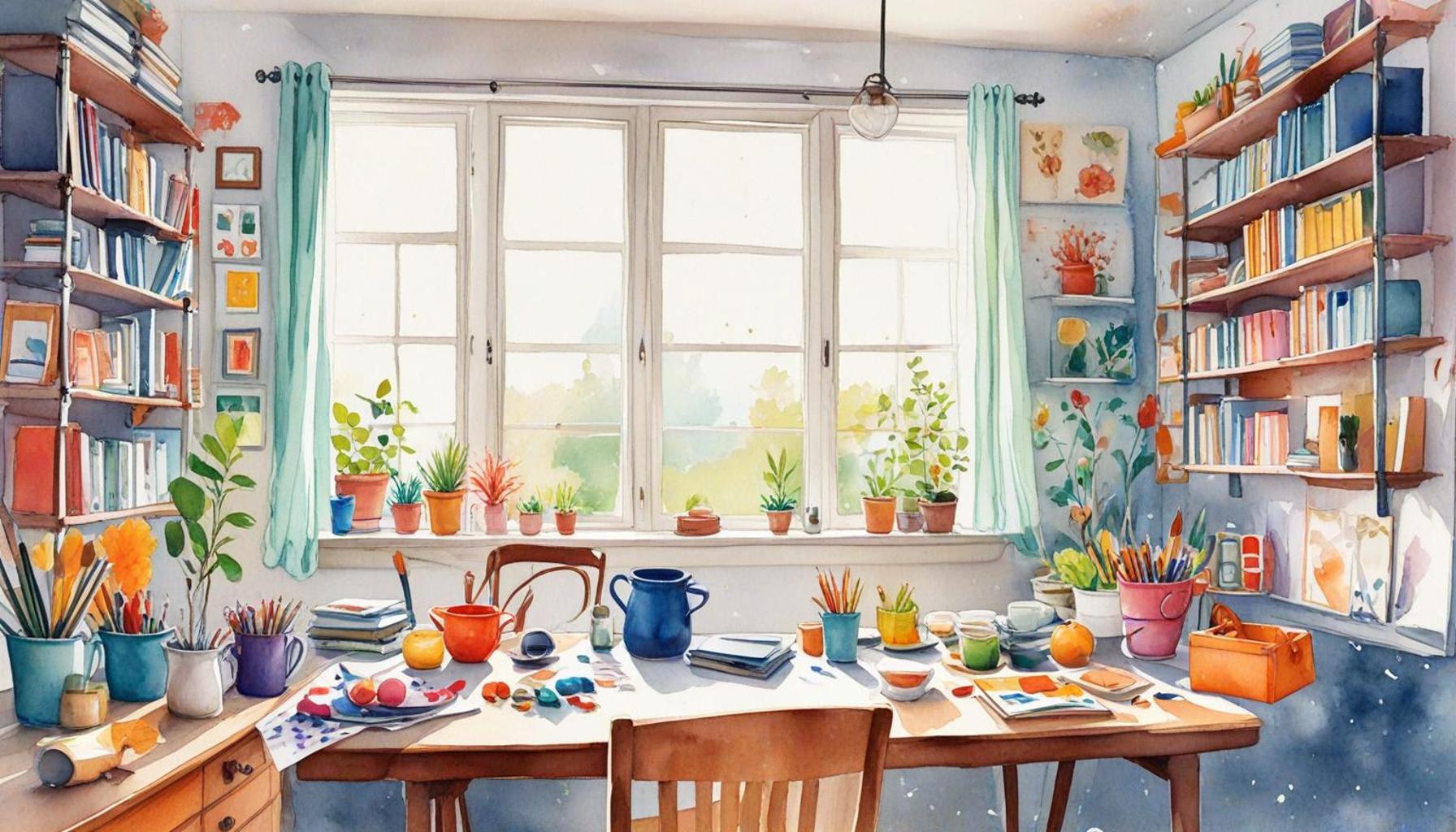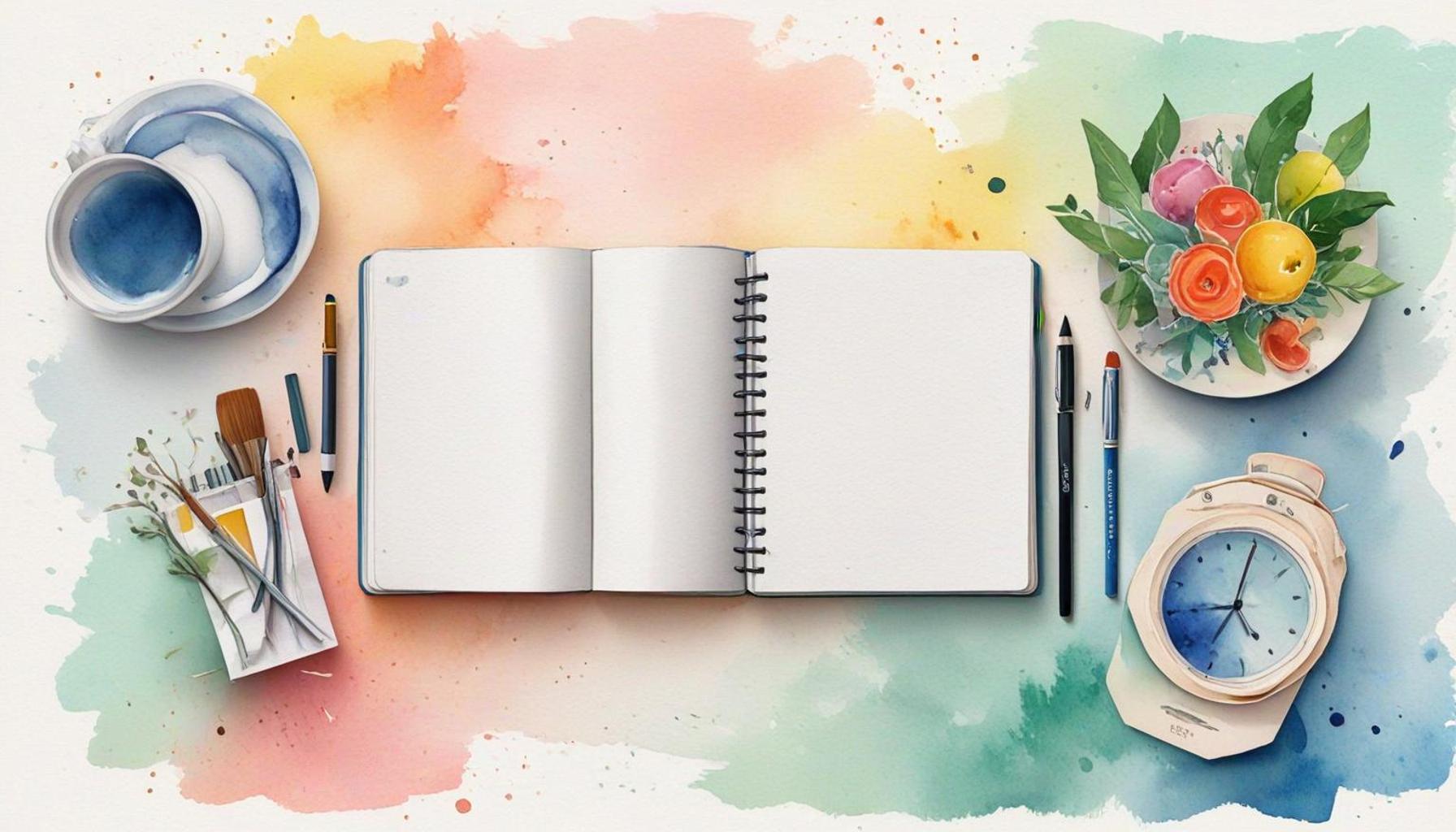The Art of Letting Go: Practical Strategies for Reducing Clutter at Home

The Transformative Power of Letting Go
In a world where consumerism reigns supreme, our living spaces often reflect a chaotic accumulation of possessions. The average American household is estimated to contain around 300,000 items, from unused kitchen gadgets to mountains of clothing. This excess not only clutters our physical space but can also contribute to feelings of stress and anxiety. Luckily, adopting a minimalist lifestyle—where letting go of the unnecessary becomes an act of self-care—can lead to a more serene and focused existence.
Understanding Emotional Attachments
One of the most significant challenges in the decluttering process is confronting emotional attachments. Items collected over the years can embody cherished memories, such as the first birthday gift from a loved one or souvenirs from a memorable trip. These items, while significant at first glance, can ultimately contribute to emotional burden when they pile up. A practical approach to tackle this aspect is to categorize keepsakes based on their emotional weight. Consider keeping only those items that spark genuine joy or serve a vital purpose in your life.
Assessing Practicality
Next, it’s essential to evaluate the practicality of your possessions. This includes asking whether specific items contribute to your daily activities or well-being. For instance, look at the gadgets in your kitchen: are you using that pasta maker, or has it just become a decorative fixture on your countertop? Consider implementing the “one-in, one-out” rule: for every new item you decide to bring into your home, let go of an equal or greater number of existing ones. This principle can help maintain a balance that promotes a simpler lifestyle.
The Benefits of Simplification
Simplifying your living space inherently leads to a more focused and peaceful environment. A decluttered home can be a gateway to clarity in thought, helping you prioritize what really matters. Research suggests that homeowners who embrace minimalism often experience reduced stress levels, increased productivity, and improved mental health. Imagine walking into a serene space where everything has a purpose; this shift not only enhances the aesthetics of your home but also cultivates a positive atmosphere.
Throughout this article, we will delve deeper into practical strategies for reducing clutter, offer step-by-step guidance for organizing your living space, and help identify the sentimental versus the superfluous. As you embark on this journey towards minimalism, remember that letting go is not about deprivation but about creating a more fulfilling lifestyle. By making intentional choices about what you keep and what you release, you cultivate an environment that reflects your true self. Embrace the freedom that comes with providing clarity to your home, and you may just find that this newfound simplicity extends well beyond your four walls.

DIVE DEEPER: Click here to uncover the emotional benefits of decluttering
Practical Steps to Begin Decluttering
Embarking on the journey of reducing clutter at home can seem daunting, but breaking it down into actionable steps can make the process not only manageable but also rewarding. To help you begin your decluttering journey, here are some practical strategies to consider:
The Four-Box Method
A popular technique for organizing and decluttering is the Four-Box Method. This approach can help you categorize your belongings effectively. As you start this process, gather four boxes and label them as follows:
- Keep: Items you use regularly and genuinely need.
- Donate: Things that are in good condition but no longer serve a purpose for you.
- Sell: Valuable items that you don’t need but could fetch some cash.
- Trash: Broken or damaged items that cannot be reused or recycled.
As you sort through your possessions, you will find clarity about what deserves a place in your home. This method not only provides structure but also helps you visualize the impact of your decluttering effort.
Designate Decluttering Time
It’s crucial to set aside dedicated time for decluttering. Whether it’s a few minutes daily or a few hours over the weekend, creating a schedule encourages consistency. Start with small areas like a single drawer or a closet shelf, and gradually expand your focus to larger spaces such as living rooms or garages. This incremental approach minimizes overwhelm and fosters a sense of accomplishment as you see tangible results along the way.
Getting Inspired by Minimalism
As you start to carve out space, consider drawing inspiration from pioneering minimalist figures, such as Joshua Becker or Marie Kondo. Their philosophies center around keeping only those items that “spark joy” or serve a specific purpose. Dive into their books or watch their documentaries to cultivate a mindset that embraces less as more. The *Minimalism: A Documentary About the Important Things* features personal stories that shed light on the transformative effects of decluttering, encouraging viewers to reflect on their values and priorities.
Moreover, adopting a minimalistic mindset extends beyond just physical possessions. It can influence your approach to digital clutter as well. Assess your electronic devices: consider deleting unused apps, organizing files into easily accessible folders, and unsubscribing from unnecessary email lists. Reducing clutter in your digital life can mirror and reinforce the changes you’re implementing in your immediate surroundings.
In essence, the process of reducing clutter at home is not only about what you remove but also about the clarity and peace that accompanies it. By embracing practical strategies such as the Four-Box Method, designating specific decluttering times, and drawing inspiration from minimalism, you begin to pave the way toward a more serene and organized environment—one that truly reflects your values and lifestyle.
The Art of Letting Go: Practical Strategies for Reducing Clutter at Home
When embarking on the journey of decluttering, it is essential to understand that the process is not merely about physical space but also psychological well-being. Holding onto items often ties us to memories, fears of waste, or a sense of obligation. Understanding these emotional ties is the first step in letting go.
One practical strategy is to implement the one-in-one-out rule. For every new item you bring into your home, consider letting go of an existing item. This approach helps maintain balance and reduces the likelihood of accumulating excess in the future. Additionally, setting a timer—for instance, 15 minutes a day—can make the process feel less overwhelming. Choose a small area to focus on, and dedicate that time to sorting through items.
Another effective method is the “Four-Box Method”, where you label four boxes: Keep, Donate, Trash, and Relocate. This practical and tangible approach clarifies decisions, ensuring every item has a designated purpose. It encourages a proactive mindset toward items that are no longer needed or loved.
Lastly, involve family members in the decluttering process. The shared effort fosters connection and understanding around why certain items may need to be let go. Establishing shared goals creates a sense of collective responsibility and reinforces positive habits.
| Category | Advantages |
|---|---|
| Emotional Freedom | Letting go allows for new opportunities and reduces anxiety related to clutter. |
| Increased Space | By reducing clutter, you gain more physical space which can foster creativity and better organization. |
Decluttering is a process that requires patience and commitment, but the benefits—both emotional and physical—are well worth it. Each step taken leads you closer to a harmonious living space that reflects your values and aspirations.
DISCOVER MORE: Click here to learn how minimalism can enhance your time management
Creating Organizational Systems
Once you have started the decluttering process, the next step is to establish effective organizational systems to maintain a clutter-free environment. The goal is not just to clear space but to create a sustainable living arrangement that promotes ease and functionality. Here are some strategies that can help achieve this:
Utilize Storage Solutions
One effective way to manage the items you choose to keep is by investing in smart storage solutions. This can be in the form of shelving units, baskets, or decorative boxes that can house your belongings while also complementing your home decor. For instance, consider utilizing clear bins for seasonal clothing orr supplies; this allows you to see what you have at a glance without rummaging through piles. Furthermore, vertical storage solutions, such as tall shelving, can maximize floor space while giving you ample room for organization.
Implement the One-In, One-Out Rule
To prevent clutter from accumulating again, adopt the One-In, One-Out Rule. This principle mandates that for every new item you bring into your home, you must remove one. This practice not only encourages intentional purchasing but also serves as a reminder to think critically about what you truly need. Whether it is a new gadget, piece of clothing, or furniture, adhering to this rule can help maintain your home’s pristine environment and avoid falling back into old habits.
Establish Daily Habits
Maintaining a clutter-free home requires a daily commitment to organization. Incorporate small routines into your everyday life that promote cleanliness and order. For instance, set aside ten minutes each evening to tidy up your living space or dedicate a few moments after meals to clear away dishes and wrappers. By embedding these habits into your daily routine, you not only save time and effort in the long run but also cultivate a lifestyle centered around mindfulness and simplicity.
Revise Your Assessments Periodically
Life is fluid and ever-changing, which means your needs will evolve over time. Taking the time to conduct a seasonal assessment of your belongings can help ensure that you still cherish and utilize each item. Schedule a specific time, perhaps at the start of a new season, to revisit your organizational systems and evaluate whether certain items still serve you. If you find yourself constantly overlooking a particular item, it might be time to let go. This practice not only aids in preventing clutter but also fosters an ongoing dialogue with your possessions, keeping your living space in alignment with your current life stage.
Incorporating effective organizational systems is imperative when reducing clutter at home. By utilizing innovative storage solutions, following the One-In, One-Out Rule, establishing daily habits, and revising your assessments periodically, you arm yourself with powerful strategies to maintain a peaceful and organized living space. Ultimately, these practices contribute to a lifestyle that not only values space and order but also prioritizes the joys of letting go.
DISCOVER MORE: Click here for practical tips on decluttering
Conclusion
Embracing The Art of Letting Go not only empowers us to reclaim our physical spaces but also nurtures our well-being and mental clarity. By implementing practical strategies, such as leveraging smart storage solutions and adhering to the One-In, One-Out Rule, we create a harmonious living environment that reflects our true selves and current lifestyles. These techniques serve as powerful reminders that each object in our homes should have purpose and meaning, rather than becoming a source of stress and distraction.
Moreover, establishing daily habits to maintain order, such as dedicating just a few moments each day to tidy up, can fundamentally transform how we experience and interact with our surroundings. The practice of periodic assessments further ensures our possessions align with our evolving needs, allowing us to remain intentional in our choices and avoid falling back into cluttered routines.
Ultimately, the journey of letting go is not merely about creating an aesthetically pleasing environment; it is about cultivating mindfulness and embracing simplicity. By adopting these strategies, you open the door to a life enriched with clarity, focus, and inspiration. Take the first step today—commit to the process of decluttering and discover the unparalleled freedom that comes from a space that is not only organized but deeply resonates with who you are. Letting go is an art, and with practice, it leads to a more fulfilling and tranquil home life.



